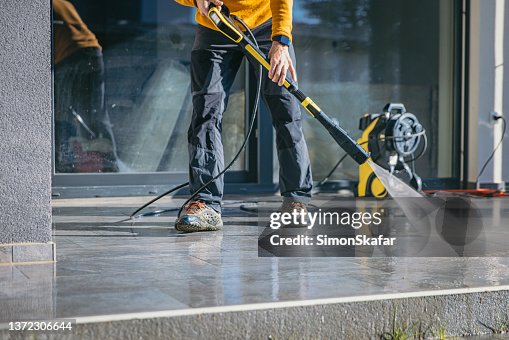Stress Laundering 101: Tips and Techniques for a Pristine Exterior
Stress washing offers as a vital tool in keeping the aesthetic allure of various external surfaces, properly getting rid of built-up dust and spots. As we discover these vital aspects, you'll find how to raise your stress washing abilities and ensure your home continues to be in beautiful problem.
Recognizing Pressure Washing
Recognizing stress washing is crucial for attaining optimal cause outside cleansing tasks. This technique utilizes high-pressure water spray to eliminate dust, crud, mold, and other pollutants from numerous surface areas, significantly boosting the visual appeal and longevity of landscapes and structures.
The process includes utilizing customized tools that creates water pressure usually varying from 1,500 to 4,000 psi, relying on the surface area and cleansing needs. For circumstances, softer surface areas like timber might require reduced stress settings to prevent damages, while concrete can hold up against greater stress for reliable cleansing. Along with stress, the temperature level of the water can likewise play a crucial duty; warm water can liquify oil and oil better than cool water.
Picking the ideal nozzle is an additional essential facet, as various nozzles produce differing spray patterns and pressure levels. Recognizing the types of surface areas-- such as plastic, brick, or asphalt-- aids in tailoring the pressure cleaning method to avoid possible damage.

Vital Equipment Required
To kick off an effective pressure cleaning project, having the appropriate devices on hand is crucial. To start with, a trusted stress washer is the focal point of your configuration. Select one with adjustable stress setups, usually ranging from 1,500 to 3,000 PSI, depending on the surfaces you'll be cleaning. Electric designs are suitable for lighter jobs, while gas-powered variations are better for sturdy tasks.
Following, invest in numerous nozzles to achieve various spray patterns - Pressure Washing Lockhart. A 0-degree nozzle offers a focused stream for challenging stains, while a 40-degree or 25-degree nozzle is suitable for broader applications

Safety Precautions to Follow
Prioritizing safety is important when participating in pressure cleaning, as the high-pressure water jets can present considerable dangers if not handled properly. Prior to beginning, examine your work area for possible threats such as electric lines, delicate structures, or unsafe surface areas. Guarantee that the area is free from blockages, people, and animals to stop crashes.
Always wear appropriate individual protective equipment (PPE) This includes security goggles to shield your eyes from flying debris, gloves to protect your hands, and durable footwear with non-slip soles. Think about wearing lengthy sleeves and pants to decrease skin exposure to high-pressure water, which can create injuries.
Keep a safe distance from the surface area being cleansed, as the pressure can cause damage or injury if intended straight at skin or delicate materials. Acquaint on your own with the pressure washer's controls and change the pressure setups according to the details task at hand.
Techniques for Efficient Cleansing
Having established a solid structure of security preventative measures, it's time to focus on the methods that will certainly ensure effective cleaning with a pressure washer. The very first step is to pick the ideal nozzle. A wider spray pattern, such as a 25-degree nozzle, is optimal for surface areas like driveways, while a 40-degree nozzle fits delicate areas like painted wood.
Next, always begin cleaning from the leading and function your means down. This approach protects against dust and particles from dropping onto locations that have already been cleaned. Maintain a consistent range of about 12 to 24 inches from the surface area to stay clear of damages.

Lastly, remember to wash the surface after cleaning to get rid of any type of residual cleaner. This last action is important for avoiding streaks and making certain an excellent finish. By implementing these strategies, you will attain ideal results and expand the life of your surface areas, enhancing the total appearance of your home.
Maintaining Your Pressure Washer
Just how can you make sure the longevity and ideal efficiency of your pressure washer? Furthermore, clean check out this site up the air and check filter to advertise optimal air flow and efficiency.
After each usage, it is important to purge the system with tidy water to remove detergents and debris that can trigger obstructing. Store your pressure washer in a dry, protected setting to shield it from weather aspects, and make sure that all links are secure before storage.
Pay special interest to the nozzle; tidy it regularly to prevent blockages and preserve efficient splashing. Maintain the high-pressure pipe cost-free from punctures and twists, as any damages can compromise functionality and safety.
Finally, refer to find out here now the supplier's handbook for particular maintenance recommendations, including seasonal checks. By sticking to these techniques, you can prolong the life of your pressure washer and ensure it operates at peak performance whenever you need it.
Conclusion
In final thought, stress washing offers as an efficient technique for revitalizing external surface areas, efficiently getting rid of gathered dirt and discolorations. Routine maintenance of stress washing equipment, including routine oil adjustments and nozzle cleansing, is necessary to make certain constant performance.
